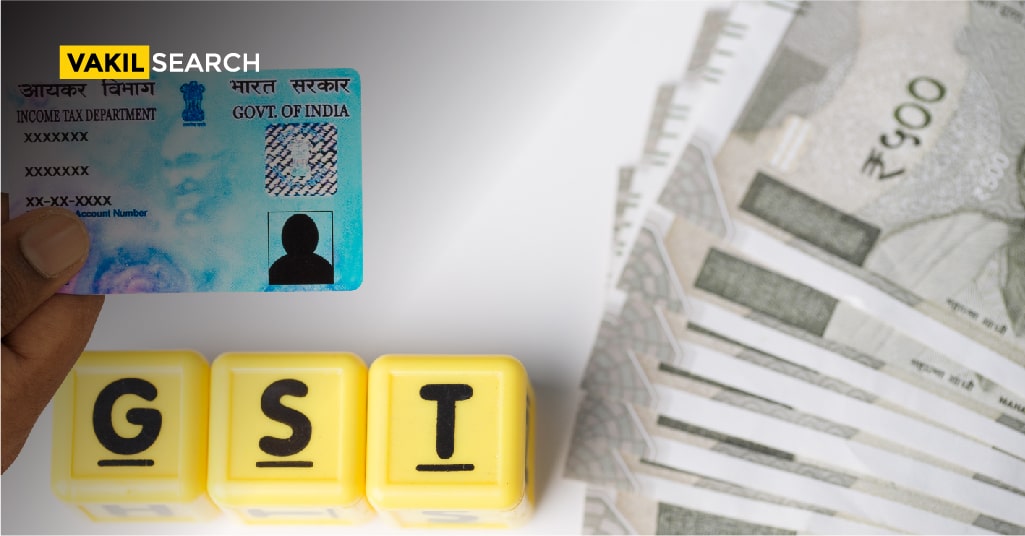Read this blog to understand how GST is calculated in India for the interstate and intrastate transactions.
The Goods and Services Tax (GST) is a consumption-based tax that applies to all final goods and services sold to end users. Intrastate transactions occur within a state, excluding transactions crossing state boundaries (interstate transactions).
Intrastate transactions are subject to the same rate of GST as interstate transactions and must be recorded in your books of account with the correct code. However, there are some special considerations if you’re an intrastate wholesaler or business operator. Let’s take a closer look at how you account for GST on Interstate and Intrastate transactions.
GST is a tax based on consumption. It is levied at a rate of 18% on goods and services. This tax is part of India’s single/integrated Goods and Services Tax (GST). The GST Council was formed in September 2017 to ensure a smooth transition to the GST system.
Defining Intrastate and Interstate Transactions
Intrastate refers to transactions that occur within a state, excluding transactions that involve crossing state boundaries (interstate transactions). Intrastate transactions include the sale of goods and services that take place in one state to a buyer who is located in the same state.
There are state variations in the application of GST. Each state can set its own GST rate, accounting method, and threshold amounts. In some states, businesses with an annual turnover below a specific amount are exempt from GST. In this article, we will focus mainly on the GST requirements for businesses that sell intrastate and for those that sell interstate.
What is the tax rate for Intrastate and Interstate transactions?
The GST rate applied to “intrastate” and “interstate” transactions is the same. The GST rate for “intrastate” transactions is 10%.
When and where to record Interstate and Intrastate Transactions?
You must record interstate and intrastate transactions in your account books on the same day you make the sale. The transaction must be recorded using the correct GST code for the type of sale you make (i.e., the type of goods or services you’re selling and the buyer’s status). You must take care to record interstate and intrastate sales correctly. If unsure what code to use, refer to your state’s GST rate tables to determine the correct code.
How do you account for GST on Intrastate Transactions?
If you are a wholesaler who regularly sells goods to businesses in the same state, you will record the transaction in the same way as interstate transactions. Wholesalers account for GST by recording the sale at the rate that applies in their state (i.e., the rate that applies when goods are sold to end users). You will record the sale of goods to businesses in your state as an “input tax.” Input tax is the GST portion of the sale you will claim when you lodge your GST return.
Accounting for Intrastate Transactions
Intrastate transactions are transactions done within one state. The GST council has decided to exclude intrastate transactions from the GST tax. Whenever a customer purchases goods from an enterprise in his state, the enterprise will not be required to charge GST. But this will not apply to services. Whenever a customer purchases goods from an enterprise in his state, the enterprise will not be required to charge GST. But this will not apply to services. The amount of CGST and SGST in the Intrastate transaction will be nil.
Wholesaler’s transaction records for intrastate transactions
If you are a wholesaler based in New South Wales and you sell goods to a business in New South Wales, you will record the transaction as an “input tax” in your books of account. Input tax is the GST portion of the sale that you will claim when you lodge your GST return. GST Code 10- Sales of goods 10- Sales of goods
Business Operator’s transaction records for Intrastate Transactions
If you are an operator who regularly purchases goods from wholesalers in the same state, you will record these purchases as “input tax” in your account books. Input tax is the GST portion of the purchase that you will claim when you lodge your GST return. GST Code 10- Sales of goods 10- Sales of goods
How to Calculate GST for Intrastate Transactions?
To calculate the amount of GST for intrastate transactions, we have to add the amount of Central GST (CGST) and State GST (SGST). The Central GST (CGST) is levied on the total amount of the goods (Excluding the amount of SGST), i.e., on the total value of goods or services. The State GST (SGST) is levied on the amount of the goods (Including the amount of CGST), i.e., on the total value of goods or services plus the amount of CGST.
Who Bears the GST Burden?
The GST burden is borne by the purchaser of a good or service. The responsibility for collecting and repaying the GST to the government rests with the seller (enterprise). In most cases, the cost of goods or services will increase with the implementation of GST because the tax rate is higher than the existing taxes. This is because the GST is a percentage of the total amount of goods, while the existing taxes are a percentage of the sale amount.
The Road Ahead: What You Need to Know
GST will transform the way businesses operate by introducing a single tax across India. The introduction of GST will be a key factor in the rise of the Indian economy. GST will help to reduce the cost of doing business in India, remove barriers to doing business across states, and improve the ease of doing business in the country. Globally, tax authorities also have been exploring the concept of GST since 1990, intending to ease the compliance burden in different jurisdictions. India’s decision to introduce GST is also expected to be a game changer globally.
Conclusion
All final goods and services sold to end users are subject to the intake of Goods and Services Tax (GST). Intrastate transactions occur within a state, excluding transactions crossing state boundaries (interstate transactions).
Intrastate transactions are subject to the same rate of GST as interstate transactions and must be recorded in your books of account with the correct code. However, there are some special considerations if you’re an intrastate wholesaler or business operator. Let’s take a closer look at how you account for GST on intrastate transactions.
India’s largest platform for legal services is called Vakilsearch. Our knowledgeable attorneys handle your contracts, paperwork, and registrations. You now have a simpler time paying your taxes and filing GST returns with our help. Your books will be kept in order by our qualified business accountants.










